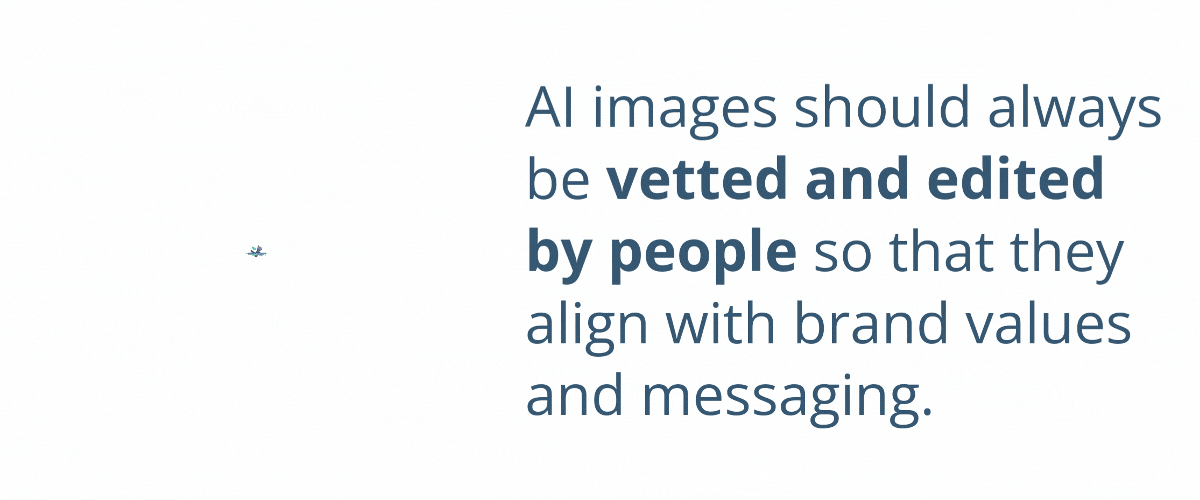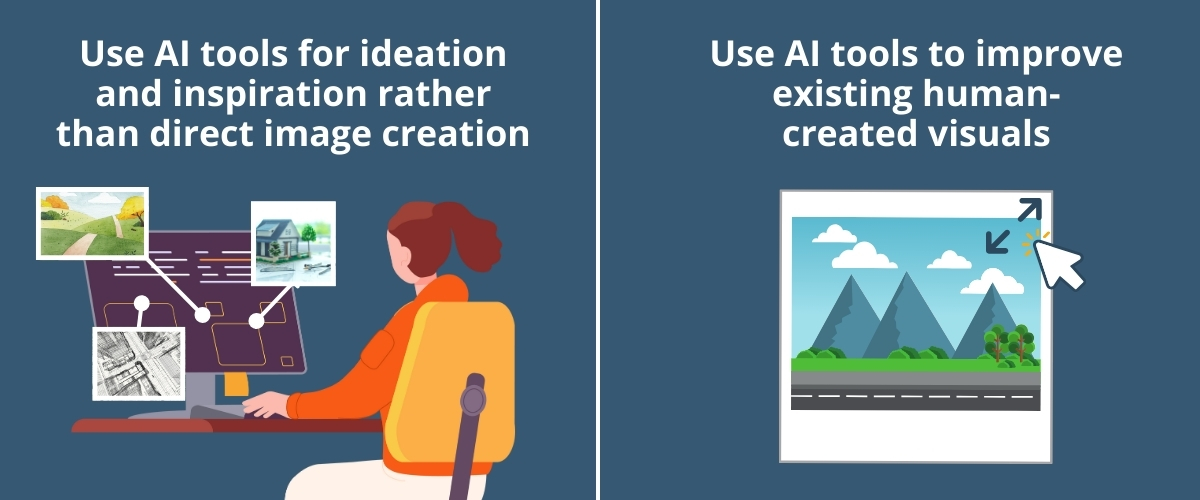AI-generated images are quickly becoming a hot topic in the marketing world, offering new ways for brands to connect with their audiences. However, as the KFC campaign shows, even the most well-intentioned AI initiatives can miss the mark. Created in collaboration with Leo Burnett, the campaign encouraged customers to use Meta’s AI image generator on Instagram to create images of hands eating KFC meals and share them with the brand. While the idea was fun in theory, the results weren’t exactly ‘finger lickin’ good.’
On the flip side, cultural institutions like the Getty Museum in Los Angeles are embracing AI in a completely different way—by acquiring its first AI-generated artwork for an upcoming exhibition, marking a significant step in how AI can shape the future of both art and marketing. So, what can we learn from these contrasting uses of AI?
The appeal of using AI-generated images is undeniable in terms of speed, cost, and customization. However, it’s crucial to understand the best practices, pitfalls, and ethical considerations surrounding their use. We took a look at what are considered key steps to ensure AI-generated images are used both responsibly and effectively in marketing campaigns.
The Potential Benefits of AI Images in Marketing
AI image generation is a powerful tool that is reshaping how brands approach visual creation. They provide designers with the ability to generate unique visuals tailored to their campaigns in a fraction of the time it would take to create them manually. From mockups to ideation, AI tools like DALL-E and MidJourney AI can produce visually appealing images at scale.
This technology can be especially beneficial for companies looking to streamline production without sacrificing creativity. In fact, AI tools can offer a quick way to generate inspiration for blog posts, ads, and social media, reducing the time and effort spent on design.
Common AI Image Mistakes and How to Avoid Them
While AI images offer efficiency, there are several mistakes marketers often make when using them. One of the biggest pitfalls is neglecting to review the images for accuracy and authenticity. Since AI tools pull data from various sources, there’s a chance the images could misrepresent certain elements, such as cultural context or product details. AI images should always be vetted and edited by people so that they align with brand values and messaging.
Another common mistake is over-reliance on AI-generated images, especially in places where authentic, human-created visuals are more appropriate. For example, when building trust with customers, AI images may not have the same accuracy as real photography, particularly in industries like healthcare or personal services.
 Building Trust With Your Audience
Building Trust With Your Audience
AI image generation can be a helpful tool, but it can also inadvertently be harmful if not used carefully. In industries that rely on trust (such as finance or healthcare), AI-generated visuals may create a sense of detachment or inauthenticity. Customers are increasingly discerning, and they may view AI-generated images as impersonal or manipulative if they feel they are being misled.
Trust-building requires transparency. It is important to be upfront about when AI-generated images are used, particularly when these visuals play a key role in your communication or branding. Doing so can better protect the integrity of the customer relationship.
Consider combining AI-generated images with human-created visuals to strike the right balance:
- Use AI tools for ideation and inspiration rather than direct image creation
- Use AI tools to improve existing human-created visuals (Such as expanding the background of an image)
 Using AI Images with Purpose
Using AI Images with Purpose
While AI images can be a fantastic tool for marketing, it’s important to use them responsibly. Marketers should approach AI image generation with a clear understanding of the potential impact on their brand’s reputation. If your brand has a strong ethical framework, it is necessary to use the right tools and implement them in a way that aligns with your values. Additionally, always ensure that you’re aware of the legalities surrounding AI-generated images, including intellectual property and usage rights.
A few key takeaways to consider:
- Consider your audience and intent
- Insert your own human creativity and touch
- Understand the data that AI tools were trained on
- Prioritize transparency by labeling AI-generated images
Let Our Design Team Create Your Responsible AI Image Strategy
At Mad Fish Digital, we combine innovative strategies with a commitment to ethical practices. Let’s craft a strategy that includes ethical guidelines, transparency, and a balanced approach to AI and human-generated content. Contact us today to schedule a consultation.

